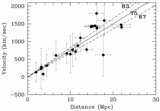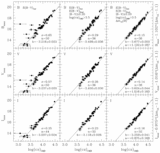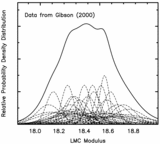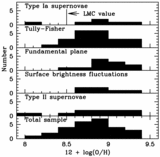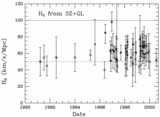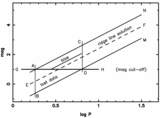Image Details
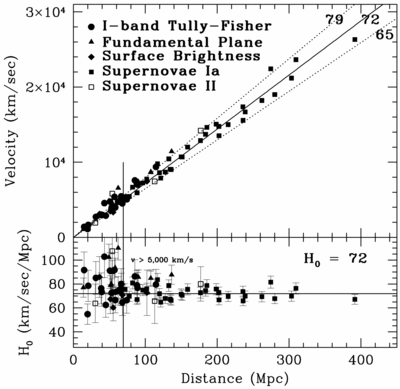
Caption: Fig. 4.
Top: Hubble diagram of distance vs. velocity for secondary distance indicators calibrated by Cepheids. Velocities in this plot are corrected for the nearby flow model of Mould et al. (2000a). Squares: Type Ia supernovae; filled circles: Tully‐Fisher clusters (I‐band observations); triangles: fundamental plane clusters; diamonds: surface brightness fluctuation galaxies; open squares: Type II supernovae. A slope of ﹩H_{0}=72﹩ is shown, flanked by ±10% lines. Beyond 5000 km s−1 (vertical line), both numerical simulations and observations suggest that the effects of peculiar motions are small. The Type Ia supernovae extend to about 30,000 km s−1, and the Tully‐Fisher and fundamental plane clusters extend to velocities of about 9000 and 15,000 km s−1, respectively. However, the current limit for surface brightness fluctuations is about 5000 km s−1. Bottom: Value of H0 as a function of distance.
Copyright and Terms & Conditions
© 2001. The American Astronomical Society. All rights reserved. Printed in U.S.A.


